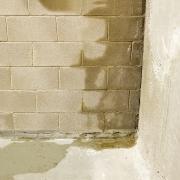What To Do If You Have a Wet Basement
Water damage in the basement can lead to mold, musty smells and ruined belongings. In addition, water can create serious safety hazards such as shock and electrocution when coming into contact with electrical wires.
If you have a wet basement, there are several things you can do to help it dry out. These measures will also help you prevent further water problems in the future.
Install a Dehumidifier
Dehumidifiers are air-conditioning systems that remove excess moisture from the air. They are a great way to improve the air quality in your basement or other areas of your home.
They can also help prevent the growth of mold and mildew, which can damage your walls, rugs, furniture and other items in your home. They are also beneficial for people with allergies and asthma.
You will need to consider several factors when deciding on the right dehumidifier for your basement. These include its capacity, size and whether or not it allows draining through a hose outside of the room.
You should also make sure that the dehumidifier is positioned in a place where it can be easily cleaned or serviced. This will ensure that it works properly for years to come.
Regrade the Soil Around the Foundation
Keeping the soil around your foundation well-draining and properly sloped away from the home is critical to preventing basement leaks. A grade that is too high or too low can cause water to seep in from the ground, resulting in rot and mold, among other problems.
The soil should be dense–preferably clay soil–and impermeable, meaning it will divert rather than hold water against the foundation. Sand, on the other hand, can absorb water before it reaches your drains.
Start by determining the slope you want and adding soil to the area until it meets your desired slope. Once it’s met, check for consistency and continue to add soil until it reaches the proper height around your foundation.
Install a Sump Pump
A sump pump is a small but vital addition to your home that prevents your basement from flooding. These submersible pumps are installed in a sump pit dug at the lowest point of your house, such as your basement or crawl space.
They work well during heavy rains or strong storms. Water is collected in the basin and pumped to a drainage area several feet away from the foundation of your home.
Your sump pump can also come with a battery back-up that will automatically start working when your primary one fails. This is a great way to protect your valuables and save money on repairs should a power outage occur during a rainstorm.
Before installing a sump pump, you should assess the entire area and identify the lowest point in your basement or crawl space. This is where you’ll install the sump pump and discharge pipe.
Install a Waterproofing System
If you have a basement that leaks, it’s important to take action right away. It can lead to major damage and deterioration.
There are a number of ways to waterproof a basement. You can choose to do it yourself, or you can hire a professional.
One way to waterproof your basement is to seal any holes or cracks in the walls and floors. You can do this with epoxy or a concrete sealer that’s guaranteed to protect against hydrostatic pressure.
Another method is to install an interior French drain around the perimeter of your basement to collect and direct water away from your home. This option will also help prevent flooding.
A more complex solution is to install an internal waterproofing system that will intercept any water that’s entering the basement from under the foundation. This will allow the water to be drained out, and it will also prevent mold growth from developing in your basement.






